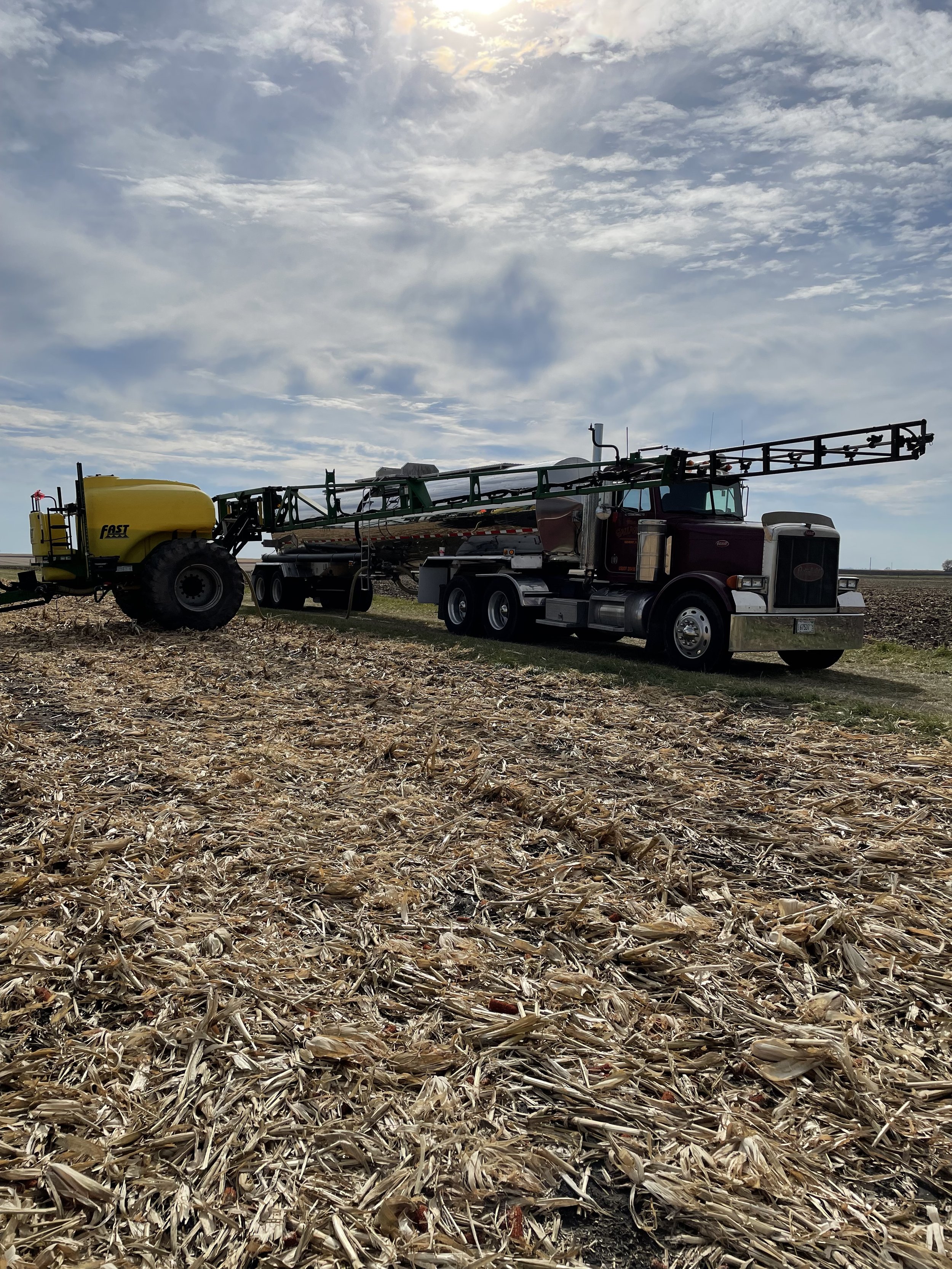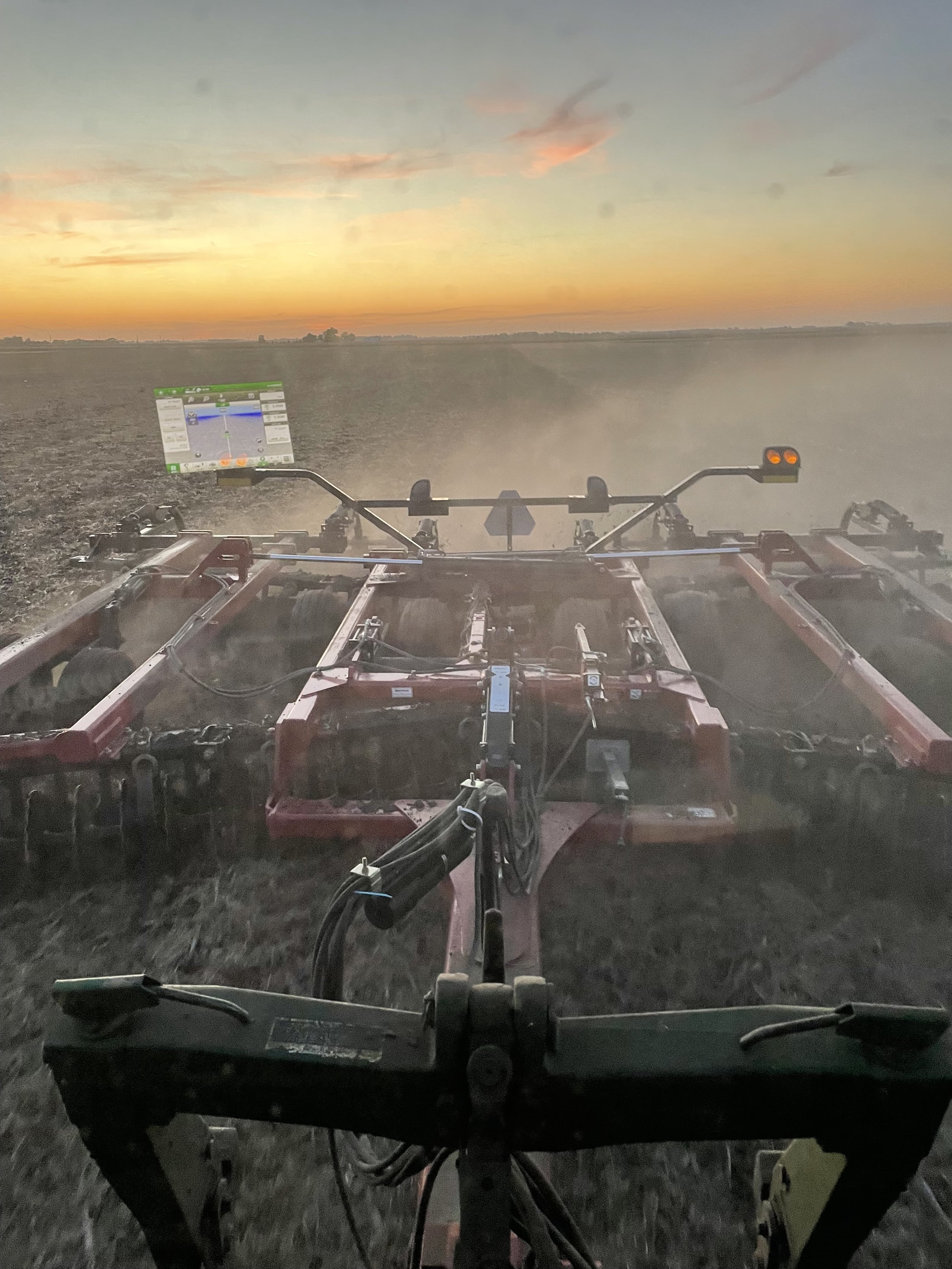Farm Talk Tuesday: Harvest marks the end of the growing season, but did you know that there is still a lot of work left to do this fall?
It looks like many farmers are wrapping up the 2022 harvest season and most of us are already working on preparing our soil for the 2023 crop year. Here are some of the things you’ve probably already noticed and will see happening over the next few weeks. Note, all farmers manage these field operations a bit differently. We all prefer different types of tillage tools, different nutrient management strategies, etc. This looks a little different from one farm to the next but most of us are doing our own version of most of these things this fall.
-Soil Sampling: We grab soil samples every couple of years, so we get an accurate estimate of nutrient concentrations that are available to our crops. Samples are taken from many different locations throughout the field, usually using the grid sampling method. Each sample is analyzed separately, and we know the GPS location that each sample was taken from.
-Fertilizer applications: After receiving the test results from our soil samples, we can use technology called variable rate technology (VRT) to apply fertilizer. For example, if one area of the field tested higher on available phosphorus or potassium, our machines could automatically apply less fertilizer in those areas.
-Tillage: High yields usually mean you have a lot of “trash” leftover in your field after harvest (stalks, leaves, cobs, etc.). We do a light tillage pass on all of our land that will have corn planted on it in 2023 with a vertical tillage tool. Tillage helps control weeds and prepare the seedbed for your next crop. Most farmers are using conservation tillage methods today.
-Fall Burndown: Many farmers in our area do a post-harvest herbicide application to control winter annuals like henbit and marestail that would be too big to kill/manage in the spring if we let them grow all winter. We also have been using a biological product as we spray to help digest some of the “trash” left in the field after a high yielding crop.
-Nitrogen applications: You’ll probably see many of those round white tanks moving around in the field when the weather really cools down. Those tanks are holding anhydrous ammonia (NH3), the gaseous form of nitrogen (one of the most important nutrients that crops need to grow!). You’ll most commonly see anhydrous ammonia being applied to fields that were soybeans in 2022, in preparation for the 2023 corn crop (soybeans make their own nitrogen!). Fall applied nitrogen can leach out of the soil so we use a variety of tactics to keep it in our field(s) so it’s available to our corn plants in the spring. Most importantly, we don’t start applying anhydrous ammonia until the soil temperature is below 50 degrees and trending downward to slow down the nitrification process. We also use nitrogen stabilizers that inhibit nitrogen loss. Some farmers skip this step and put on 100% of their nitrogen in the spring (shoutout to my dad over in Indiana!).


